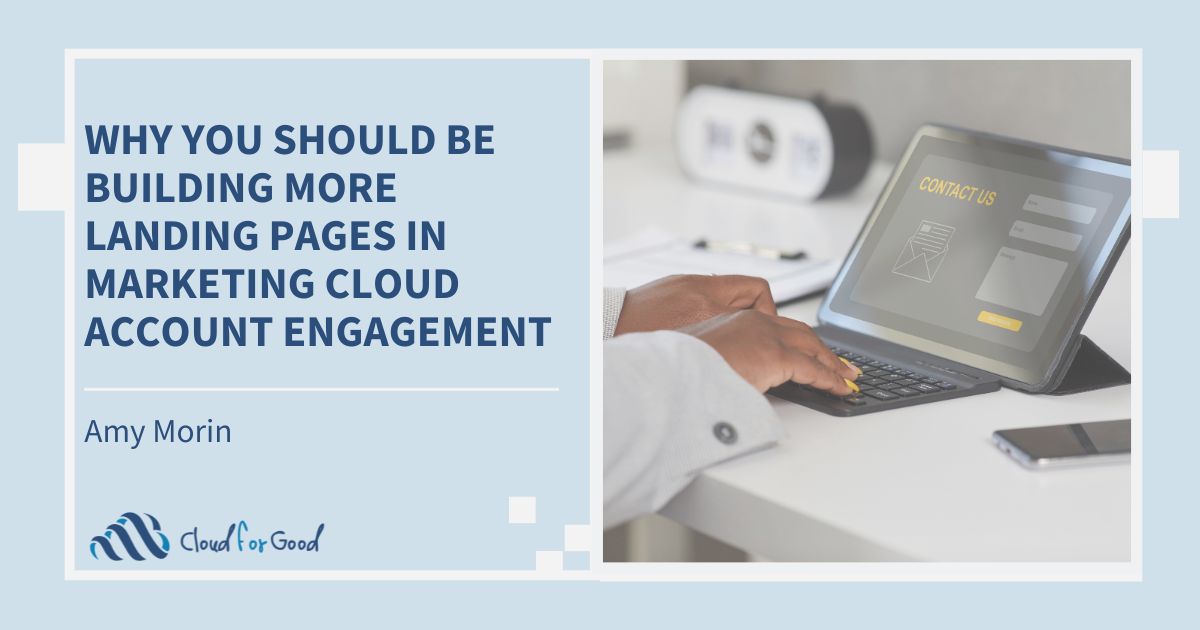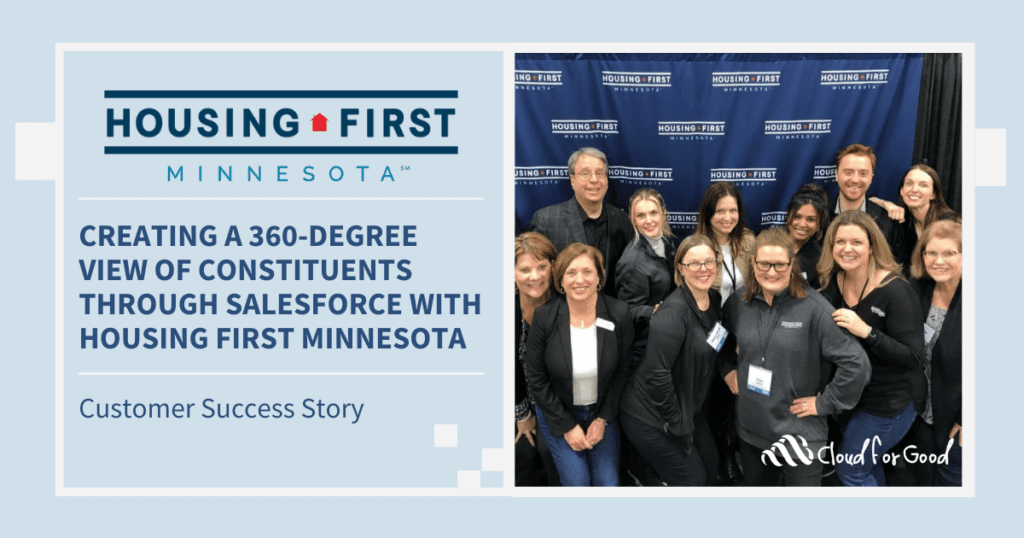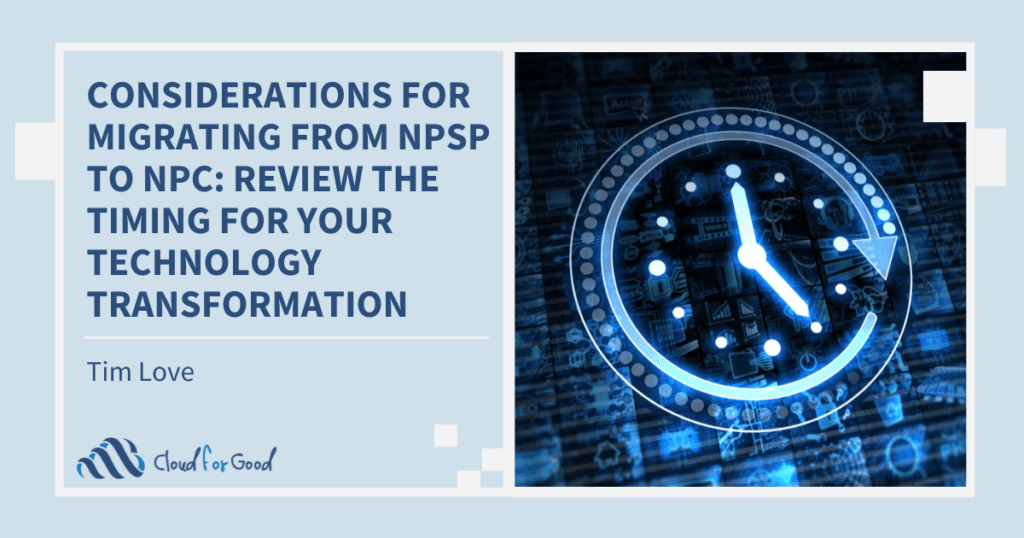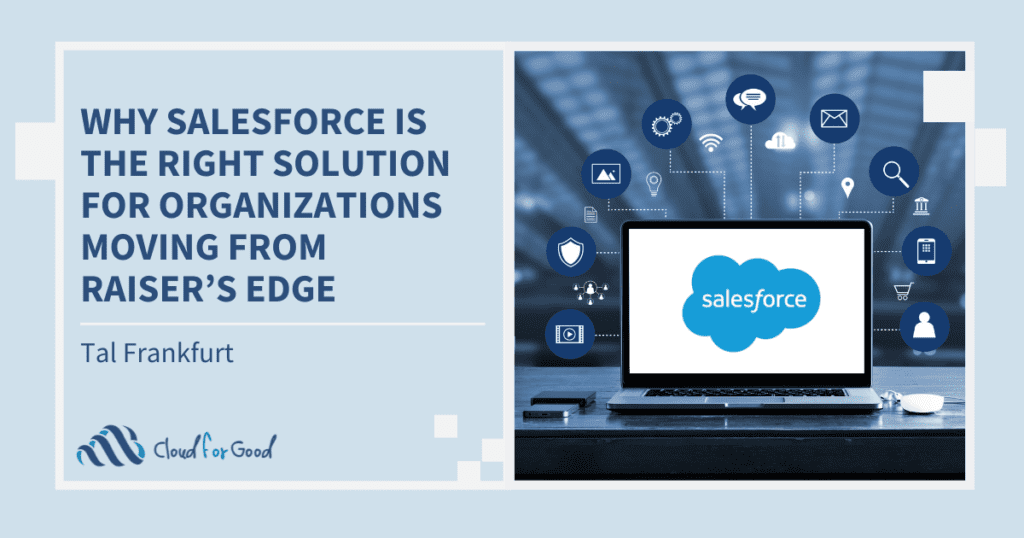If you built landing pages in Marketing Cloud Account Engagement (formerly Pardot) prior to September 2021—I apologize if the title of this blog made you cringe a little. Before Salesforce added the Lightning Landing Page Builder in 2021, you had to be a complete pro in knowing how to build layout templates and had to be a CSS-HTML maverick. It was not easy to roll out topic-specific landing pages as a part of your campaign strategy.
Thankfully, Salesforce understood the challenges users faced on this key feature for increasing campaign conversions and rolled out the Lightning Landing Page Builder for Marketing Cloud Account Engagement (MCAE). I am exceptionally excited about the potential this new feature can do for clients using Account Engagement.
If you’re just sending emails in 2023, you might be missing out.
I’m often surprised that landing pages in Account Engagement are overshadowed by email in an organization’s marketing strategy. In today’s data-centered marketing world—email has a limit on what it can tell you about subscribers’ behavior. And since Apple Mail’s Privacy Protection rolled out, there’s even less behavior data available. This is where adding an Account Engagement Landing Page with your email could give you richer data and a better understanding about your subscribers’ behavior, level of interest, and intention.
Campaigns are both a marketing strategy concept and a tool feature in Salesforce.
If we’ve worked together implementing your Account Engagement, you’ve likely heard me pontificate about the usage of the word campaign in marketing. In marketing strategy, it’s a way to define and group marketing assets and goals; in Salesforce, it’s an object that you can use to group leads and contacts for a campaign (campaign members). With Account Engagement and campaigns, you can associate the marketing assets you’ve created for that campaign to campaign members. What that results in is lead or contact engagement tracking on your marketing assets for your campaigns.
Using the Connected Campaigns feature with Account Engagement, engagement metrics are pushed through to Salesforce via the campaign object. As a result, you can view the campaign member’s level of interaction through their lifecycle using the Engagement History component. For the Engagement History component to give you the richest detail, you’re encouraged to build a landing page, a form, and redirects to accompany the email for your campaign.
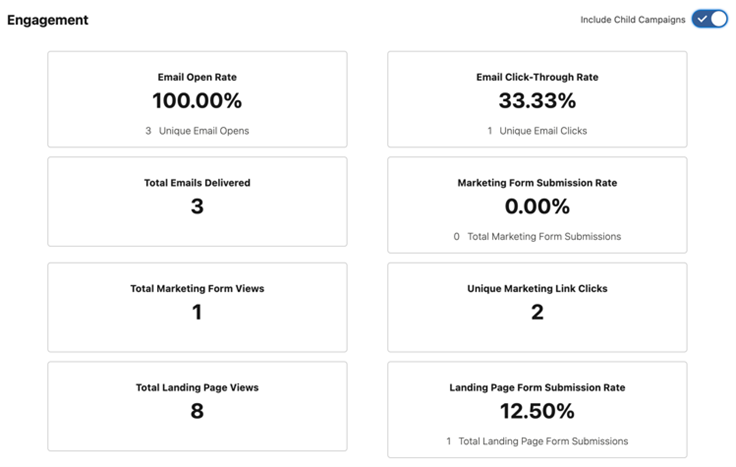
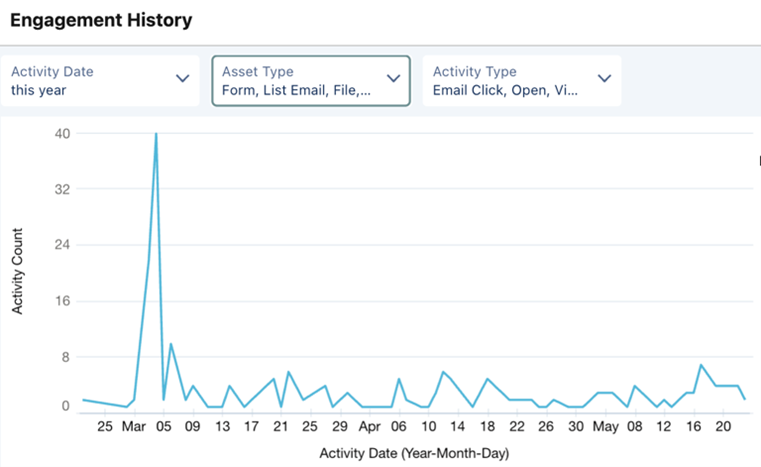
Landing pages are more versatile than email, but they have a symbiotic relationship.
I’m a proponent of short, clear, to-the-point emails that are actionable. Subscribers are busy and their email inboxes are busy too. An email that’s unclear, too long, or too complex may be deleted, dismissed, or ignored. They don’t, or won’t, take the time to read and digest what you are saying or are asking them to do. So, how do you find that perfect email balance of personalized, engaging, to-the-point, and informative? By leveraging landing pages.
Landing pages give you more room to expand on email content. Was there something in that email that you wanted to provide more information on? Maybe you wanted to provide more context about how the ask in your email could benefit them? Use your email as a way to provide context, then ask them to click to a landing page to get more information.
Is there data about your subscribers that you’re looking to collect to build more segments? Maybe you’d like them to sign up to be a volunteer or attend an event you’re hosting? These are all great use cases for building a landing page with a form. It’s a direct email-to-form interaction, it’s clear and actionable for the subscriber, and its metric-rich data for you.
Note: In 2021, I wrote about a blog about how to convert website visitors using forms in Account Engagement. Give it a read to learn more about how amazing forms are in Account Engagement.
Salesforce’s drag-and-drop Landing Page builder is a game changer for marketers.
The new drag-and-drop landing page builder in Salesforce is fun and satisfying. Start a new landing page, associate it to a campaign, head into the editor, drag components into your layout, and use the editor to style until you’re satisfied with how it looks on desktop and mobile. Want a one column hero section and then a two column block? Easy! Want to design a colorful footer or add a navigation bar without using CSS? Not a problem!

Long gone are the days when you need to code CSS and HTML into a layout template for your Account Engagement landing pages. Less time is needed to build beautiful landing pages with engaging content for your subscribers in your campaign. There’s so much potential to create more meaningful marketing assets beyond just email that will give you richer engagement metrics for your campaign, and allow you to truly understand your subscribers’ interests and intentions!
Looking for some help on how you can incorporate more landing pages in your marketing campaigns? Interested in learning more about Marketing Cloud Account Engagement and what it could do for your higher education institute or nonprofit? Contact Cloud for Good today!

